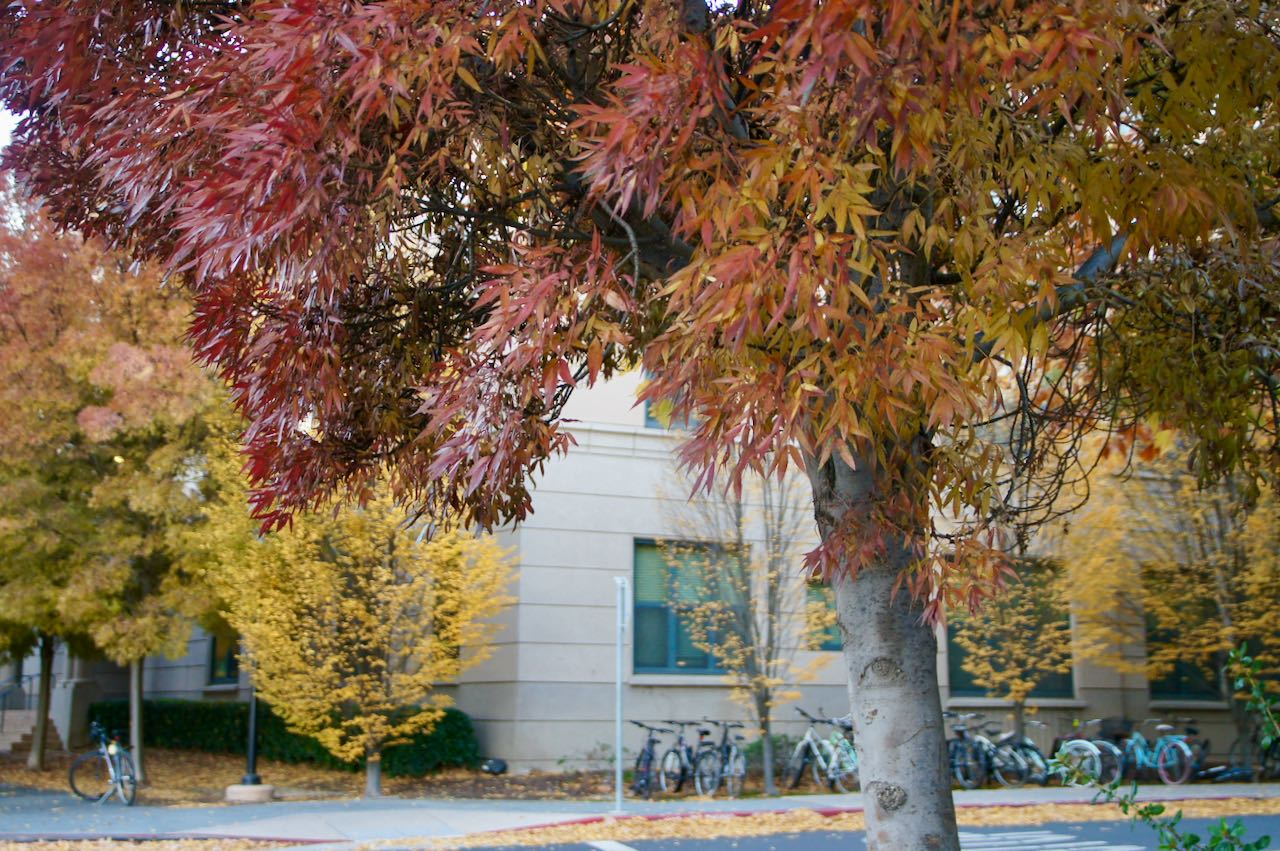Fraxinus angustifolia ‘Raywood’
 Raywood ash
Raywood ash
The narrow-leaved ash exists in several horticultural varieties of which ‘Raywood’ is best known locally. In summer, bunches of yellow samaras add color. The leaf is odd-pinnately compound: the pinnate leaf has a single leaflet at the end of the leaf axis (rachis). As with all ashes, the leaves are opposite: two opposing leaves at each node. In the fall, the leaves rather resemble those of the Chinese pistache but differ by having finely saw-toothed leaflets, darker above, with palpable midrib and veins. Also, the leaves of Chinese pistache are alternate, one leaf per node, and usually even-pinnately compound, terminating in a pair of leaflets.
Examples may be seen at Rains Houses at the north end of the semicircular lawn, nearby at the north end of Hacienda Commons, and on the parking lot side of the Haas Public Service Center. In Menlo Park, three trees are at 1885 Oakdell Drive, and in Palo Alto two trees are at 1440 California Avenue, between Columbia and Dartmouth Streets.
Name derivation: Fraxinus – classical Latin name for ash; angustifolia – narrow-leaved.
About this Entry: The main text of this entry is from the book Trees of Stanford and Environs, by Ronald Bracewell, published 2005. John Rawlings subsequently added details on the leaves.





